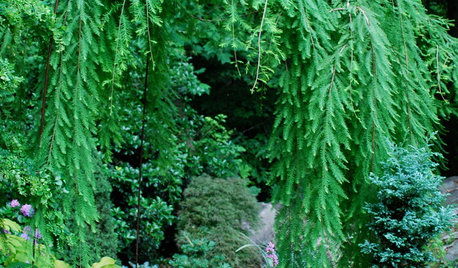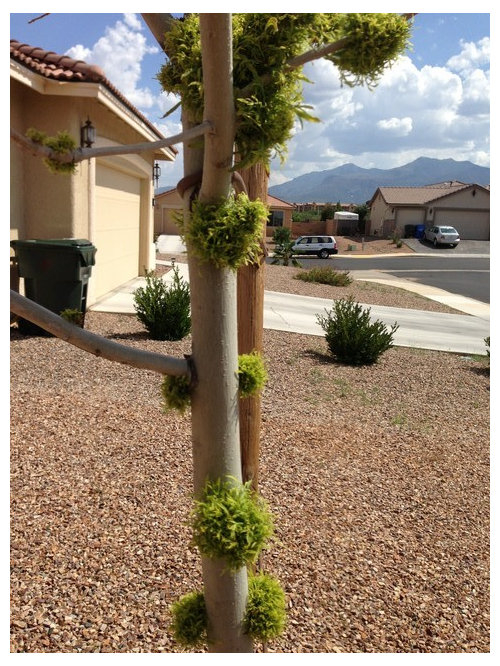What is wrong with this tree?
jinxmom
10 years ago
Related Stories

LIFEYou Said It: ‘Every Room Should Have the Right Wrong Thing’ and More
This week on Houzz we were inspired to break out of catalog styling ruts and let our design freak flags fly
Full Story
GARDENING GUIDESWhat's Wrong With My Plant? Leaves Often Hold the Clues
Learn how to identify common plant ailments by reading their leaves
Full Story
LIFEYou Said It: ‘The Wrong Sink Can Make You Hate Your Kitchen’
Design advice, inspiration and observations that struck a chord this week
Full Story
ARBOR DAY8 Reasons to Plant a Great Tree
Beauty is its own reward, but the benefits of planting the right tree in the right place go way beyond looks
Full Story
EDIBLE GARDENSHow to Grow 10 Favorite Fruit Trees at Home
Plant a mini orchard in fall, winter or early spring to enjoy fresh-off-the-tree fruit the following year
Full Story
CHRISTMASReal vs. Fake: How to Choose the Right Christmas Tree
Pitting flexibility and ease against cost and the environment can leave anyone flummoxed. This Christmas tree breakdown can help
Full Story
HOLIDAYSHow to Care for Your Christmas Tree
Keep your tree looking lush until the last ornament is packed away with these tips for watering, using stands and more
Full Story
FALL GARDENING6 Trees You'll Fall For
Don’t put down that spade! Autumn is the perfect time for planting these trees
Full Story
LANDSCAPE DESIGNThe Weepers and the Creepers: 10 Intriguing Trees for Your Garden
Bring something a little different to your landscape with a tree that dives, twists or crawls
Full Story
GARDENING GUIDESWhen and How to Plant a Tree, and Why You Should
Trees add beauty while benefiting the environment. Learn the right way to plant one
Full StoryMore Discussions






Embothrium
jinxmomOriginal Author
Related Professionals
Maple Valley Landscape Architects & Landscape Designers · Fitchburg Landscape Architects & Landscape Designers · Rossville Landscape Architects & Landscape Designers · Southfield Landscape Architects & Landscape Designers · Deerfield Landscape Contractors · Fairview Landscape Contractors · Fuquay-Varina Landscape Contractors · Santa Maria Landscape Contractors · Ansonia Landscape Contractors · Annapolis Siding & Exteriors · Baltimore Siding & Exteriors · Fort Worth Decks, Patios & Outdoor Enclosures · Freehold Decks, Patios & Outdoor Enclosures · Larkspur Decks, Patios & Outdoor Enclosures · Okolona Stone, Pavers & Concretebrandon7 TN_zone7
jean001a
ken_adrian Adrian MI cold Z5
saccharum
salicaceae
jinxmomOriginal Author
Huggorm
saccharum
Embothrium
brandon7 TN_zone7
Sara Malone Zone 9b
jinxmomOriginal Author
ken_adrian Adrian MI cold Z5
cadillactaste
Toronado3800 Zone 6 St Louis
saccharum
jinxmomOriginal Author
Toronado3800 Zone 6 St Louis
brandon7 TN_zone7